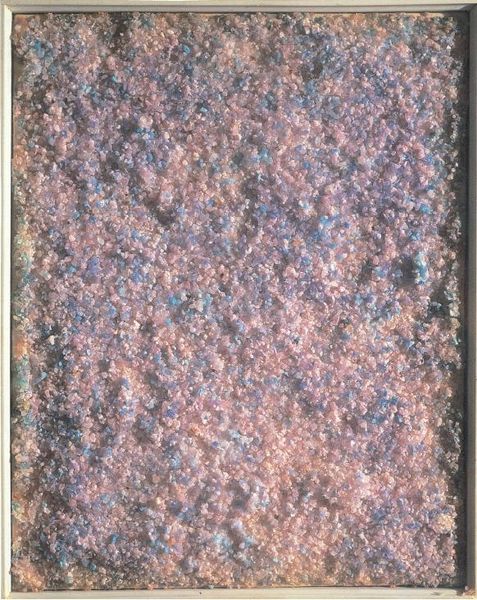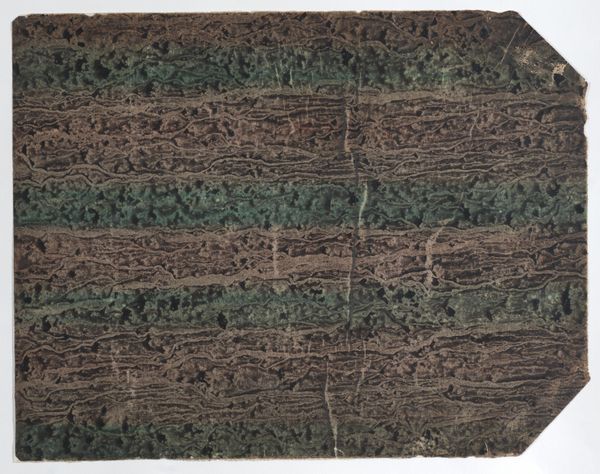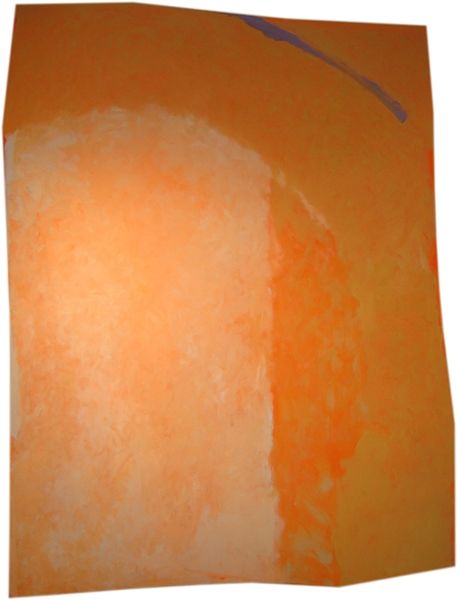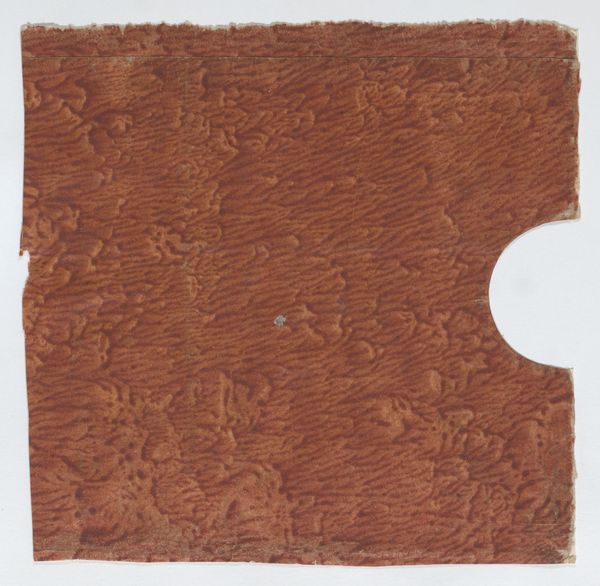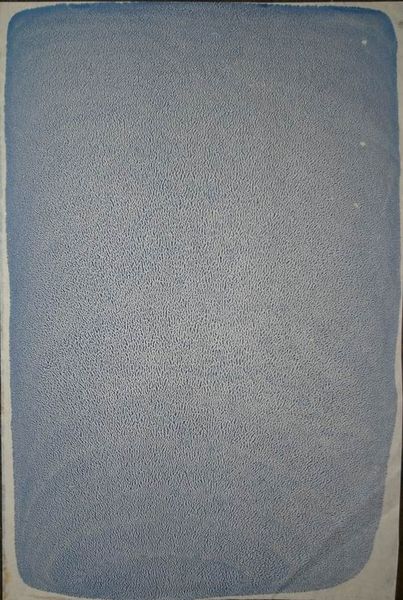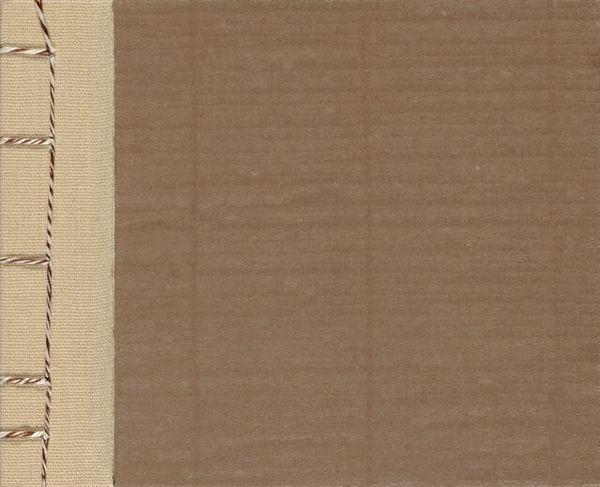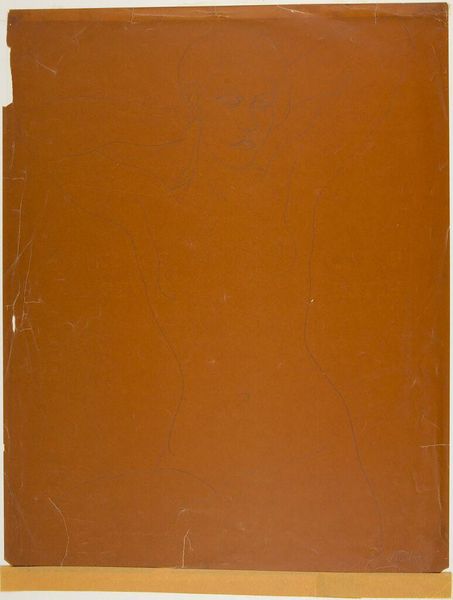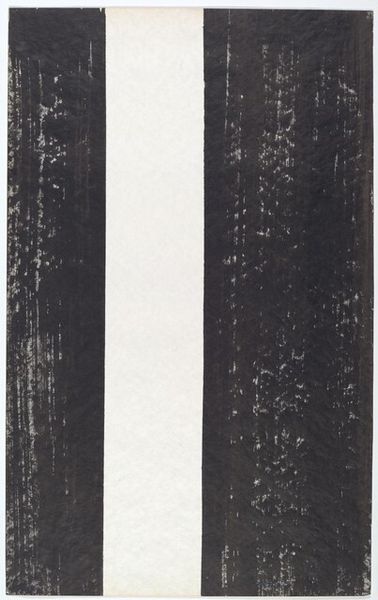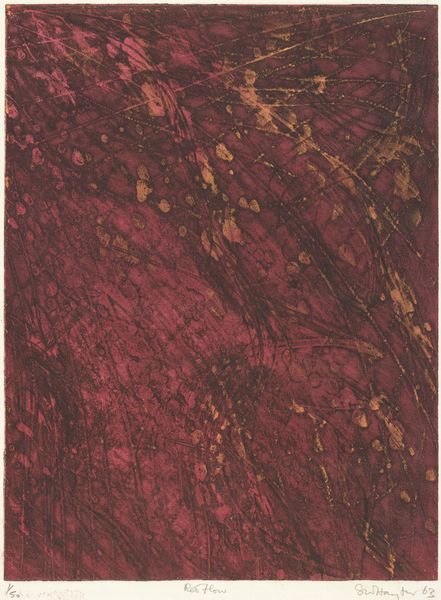
drawing, pastel
#
abstract-expressionism
#
drawing
#
abstract expressionism
#
abstract painting
#
abstract
#
geometric
#
pastel
Dimensions: overall: 9.9 x 45.8 cm (3 7/8 x 18 1/16 in.)
Copyright: National Gallery of Art: CC0 1.0
Curator: This is an early study by Mark Rothko, conceived between 1958 and 1959, as part of his designs for the Seagram Murals. He used pastels for this work, and I find the juxtaposition of tones quite striking. Editor: Yes, an initial reaction evokes a somber mood, a restrained emotionality, though these hues of red and brown are rich in a way that makes me feel rather grounded, as if in earth itself. It contrasts dramatically with his better-known luminous works. Curator: Rothko’s mature style usually aims at transcendence, and in this early stage, one can discern an evolving relationship between figure and field. What do you think of how these geometric shapes carry their own history? Do they communicate despite their minimal representation? Editor: Absolutely. I'm thinking about the context in which these murals were commissioned for the Four Seasons Restaurant, meant to be a space of leisure and consumption. His eventual withdrawal from the project became, to me, a powerful statement against commodification. Curator: The commission indeed takes on a layer of subversive intention after this. Do you see any echoes or hints in the choice of a warm and rich, yet restrained color palette for these forms? I wonder about how Rothko thinks of the geometric shape, given his abandonment of representation. Editor: It reminds me of his shift from overtly political scenes in the 1930s and '40s towards this supposedly pure abstraction. Yet even here, a critic can’t help but view them as symbols laden with meaning. A kind of coded protest, if you will. Curator: Rothko’s handling of geometric symbols points towards an articulation of shared experiences, as it opens doors to subconscious dialogues with the viewer. It’s not purely emotional; it’s about shared understanding and cultural memory, a nonverbal form of cultural storytelling. Editor: True, especially if one interprets each block as symbolizing distinct social strata within the restaurant's microcosm. Each mural subtly comments on the power dynamics and inequality inherent in the very act of dining in such an opulent space. I think a sharp contrast can really reveal unspoken tensions this way. Curator: The conversation reminds us to consider the artist's hand and conscious mind. The artist's mind, memory, culture, experience – they have much to offer to us who analyze symbols! Editor: Thank you. It serves as a good reminder that our encounters with abstract expressionism must consider the complexities of artistic intention and social critique.
Comments
No comments
Be the first to comment and join the conversation on the ultimate creative platform.

